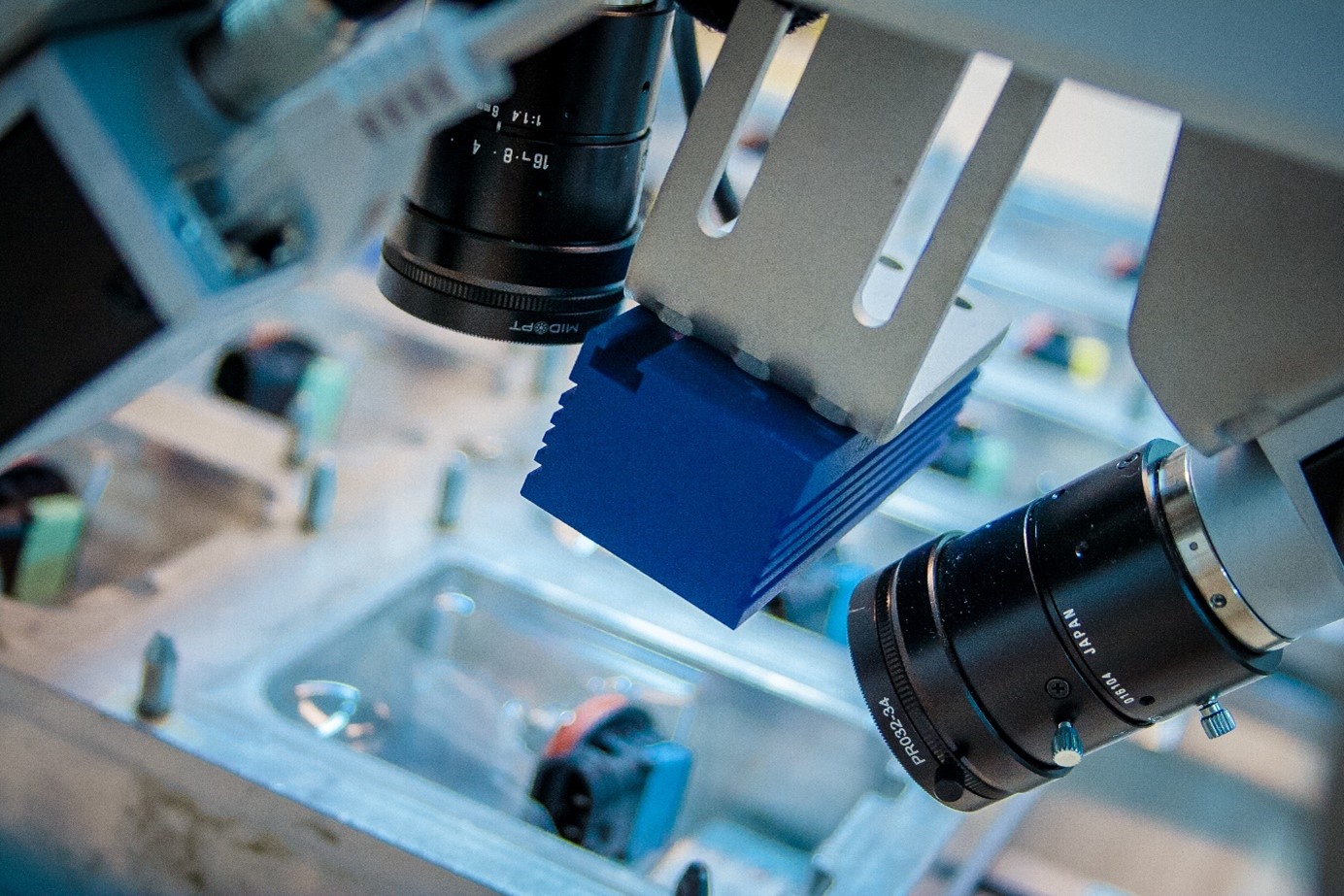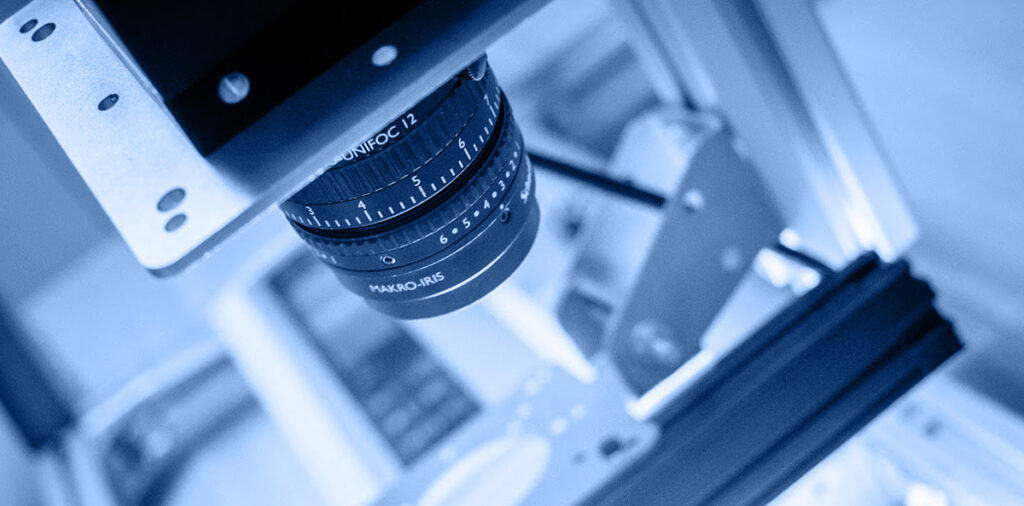
How does a vision system work and why should you implement it in your company?
Machine vision is one of the most important technologies used in automation and robotics today. It allows machines to see and analyze objects, which enables precise quality control and automatic monitoring of production processes. What is covered by the name machine vision system? Below you will find all the most important information about automatic quality control systems and answers to the most frequently asked questions:
- What is machine vision
- What does a machine vision system consist of
- Where is machine vision used
- What are the types of machine vision systems
- Whether it pays to implement a machine vision system
- Where to buy a machine vision system.
What is machine vision?

Machine vision is a technology that enables computers and machines to recognize, analyze and interpret images, just as human vision does. Using advanced cameras, sensors and software, machine vision systems are able to process images with high accuracy. As a result, such a solution allows automatic recognition of shapes, colors, textures or defects in a very short time on production lines.
How to automate quality processes based on vision systems? Check it out!
Automatic quality control systems using machine vision are used in industries where high quality and fast production rates are important – in the automotive, electronics, pharmaceutical, cosmetics and food industries. Used for quality control in production, machine vision systems eliminate human labor errors, reduce claims costs and increase process efficiency.
What does a machine vision system consist of?
A machine vision system consists of several basic components, which together form a whole that enables automatic image analysis. These are:
- CCTV cameras – capture images of the object to be analyzed. These can be monochrome, color, 2D or 3D or thermal imaging cameras.
- Lighting – the most important element that affects the quality of the recorded image. Well-designed lighting allows accurate reproduction of details regardless of environmental conditions (day/night)
- software – processes the camera image and interprets it according to pre-programmed algorithms. This software, comparing the observed product with the pattern, decides whether it meets the quality requirements, whether the object is within the limits of the standard
- integration equipment – these are controllers and communication interfaces that allow integration of the vision system with the production line and production management system.
How did we implement packaging accuracy inspection using a vision system?
Where is machine vision being used?
Machine vision is widely used in industries where automation of production processes is important. Applications include:
- product quality control – check that products and semi-finished products meet quality requirements. They can detect damage, shape deformation, missing hole, wrong dimension or color,
- assembly inspection – the systems monitor the production process. For example, they check that all components are used in assembly and that they are correctly connected,
- identification and sorting – systems are able to recognize products and sort them according to guidelines, moving them to the appropriate line
- robotics operation – based on the recognized item, the system activates a robotic arm that performs assembly or order picking
- logistics and machine rooms – the system verifies the correctness of product and packaging labeling, printing of 1D/2D codes and OCR marks.
What are the types of vision systems?
Vision systems vary depending on the application, the technology and the way the image is analyzed.
2D systems are most often used in industry. They allow analysis of two-dimensional images. They are perfect for simple tasks such as quality control or pattern recognition. 3D systems allow analysis of objects in three dimensions, which allows more detailed examination of products. They are used where precise analysis of shapes and dimensions is required.
Multispectral systems use different wavelengths of light (e.g., infrared) to analyze materials with different structures and properties, while hyperspectral systems are able to analyze the chemical properties of materials, which is particularly useful in the pharmaceutical or food industries.
Does it pay to implement a vision system?
The decision to implement vision technology depends on the specifics of the business and the goals of the company. For companies that focus on automation, precise quality control and minimizing human error, a vision system can bring tangible benefits. The unquestionable advantages of its implementation are:
- higher production quality – the number of defects and production defects in products that are sent to the customer can be significantly reduced. In automatic quality control systems, every product is examined, not just selected ones,
- reduced complaint costs – by not releasing defective products, the number of complaints and associated handling and shipping costs are reduced
- saving time and resources – automatic product inspection speeds up the quality control process, the system works faster than a human,
- increased productivity – the systems operate 24/7, without the need for interruptions, resulting in more efficient production lines,
- increased safety – the automatic quality control system replaces the worker, preventing potential accidents, or working in harmful conditions.
- Despite the high initial cost, the investment pays for itself quickly, especially in large production plants, where even small errors generate large financial losses.
Where to buy or order a vision system?
Purchasing a vision system requires a careful analysis of the needs of the company and the selection of the right supplier. Systems are offered by specialized industrial process automation companies and manufacturing equipment suppliers. Etisoft offers both simple vision systems based on sensors, smart cameras, as well as advanced quality control systems designed to meet individual customer needs. Automatic quality control systems designed by Etisoft Smart Solutions are “tailor-made” solutions, which allow full integration with already existing systems working on production lines. Vision control systems are an investment that significantly improves the quality of production and in the long run brings tangible financial benefits to the company.
